John Horton Conway at Spelman College
Princeton University's John Horton Conway (1937-2020) spent two days at Spelman College in late April 1995, as part of that year's Math Awareness Week. The visit was made possible thanks to generous support from the Provost's Office, the Honors Program, and the college's Center for Scientific Applications of Mathematics (directed by Dr Sylvia Bozeman).
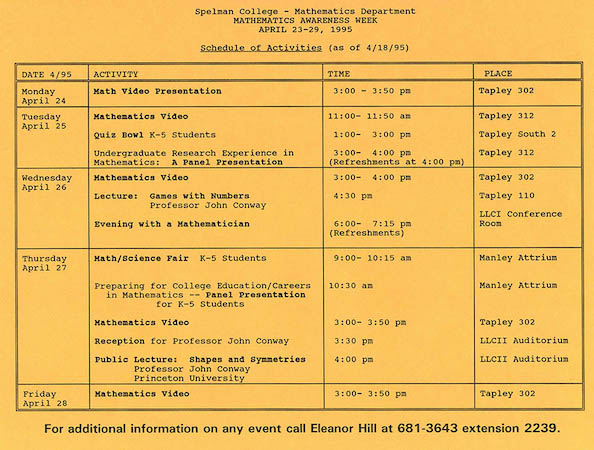
As the photos below amply demonstrate, John spent his time at Spelman engaging students, faculty and administrators alike, in a series of dazzling presentations and informal get-togethers. A consummate showman, John was always "on", mealtimes included. He left a deep impression on everyone who met him.
When Colm Mulcahy picked him up from the airport--after the inevitable lost plane ticket and rush reissue at great expense--he immediately regaled him with details of a special case of the 290 theorem which he had mastered en route. Colm was more worried about whether his chances of getting tenure had just evaporated.
[Colm had many more fun interactions with John in the decades ahead, and wrote his Guardian obituary in 2020. He also contributed to BBC Radio 4's Last Word tribute which opens by celebrating the life of Little Richard); the Conway segment starts 14 minutes in. See here for more on JHC.]
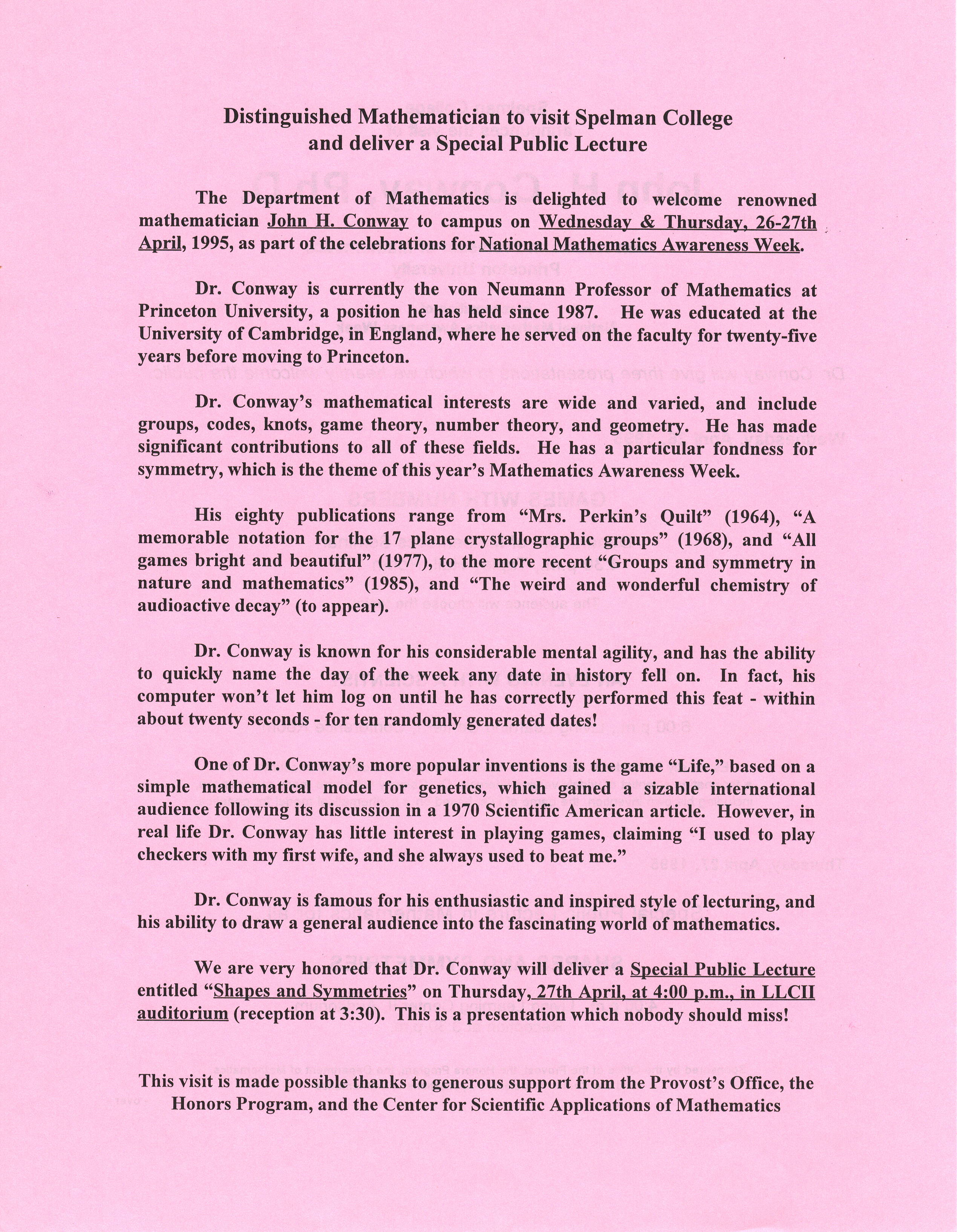
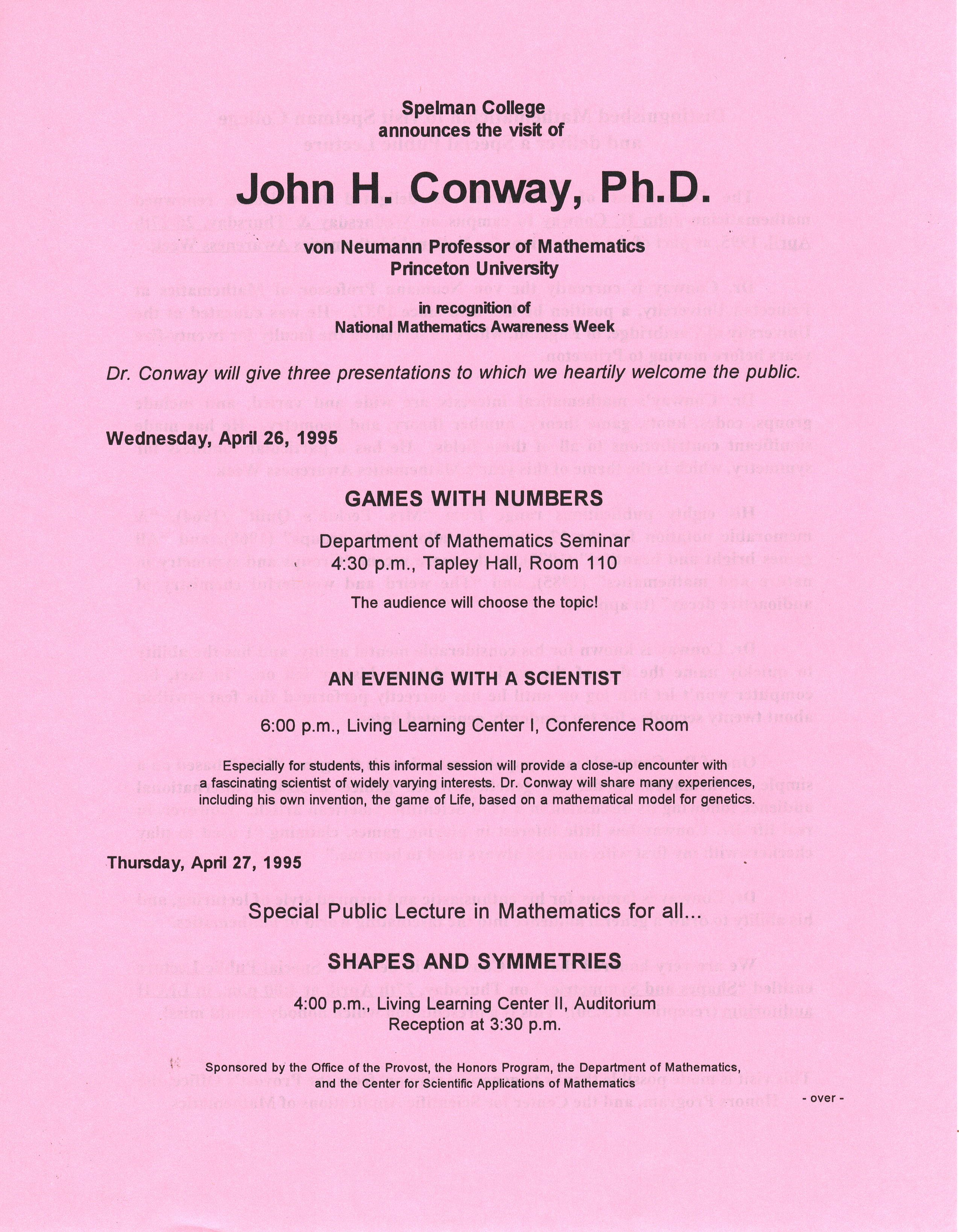
Three official events were planned for the visit, not counting lunches and dinners with students and faculty, and one more was added on the second day.
Wednesday 26 Apr 1995
At 4:30pm the day he arrived, John started his talk "Games with Numbers" in Tapley 110 by outlining a half dozen talks he was willing to give, and having audience members vote for the one they wanted.
.jpg)
.jpg)
The topic selected was rational tangles, and what followed was highly interactive. Participants depicted are students Ayana Moore C'97 and Talitha Wangerin C'96, and Dr Ehme (obscuring somebody we can't ID).
He then entertained the audience with a second topic from his list, his own creation the look-and-say sequence, along with associated "chemical elements" and the baffling connection to a number which some refer to as Conway's constant.
Dr Ehme recalls, "He linked the periodic table to the Look and Say sequence. I remember that because he said there were 92 cases, and he named them after the elements to help him remember them! The fact that he was willing to consider 92 cases on a whimsical problem convinced me he not like the rest of us. His curiosity must have been immense to drive him to keep discovering and resolving all these cases. Naming them after the elements would not have helped me, but it helped him!"
.jpg)
.jpg)
.jpg)
.jpg)
At the end, he demonstrated other toys and rope tricks and nobody wanted to leave. Shown are Dr Bozeman, Dr Earl Barnes (then spending a year at Spelman), Ayana again, Yvette Daugherty C'97 (in blue and red jacket), and on the right Dr Olubummo (in white) and behind her Dr Shah (by the green board). [All three students above would later get doctorates, as would many of those featured below.]
We then adjourned to LLCI for "An Evening with a Scientist" and were joined by the Provost (who was footing some of the bills, including the new plane ticket). John started the proceedings with one of his party pieces, in which he slowly showed everyone a trick with this hands that somehow nobody could duplicate. In doing so, he managed to get grown men and women to assume unusual positions they never saw coming. It's an item kids of all ages love. (Here's a dynamic version by Gil Kalai.)
.jpg)
.jpg)
.jpg)
.jpg)
.jpg)
.jpg)
Shown are Ayana Moore (possibly with Tishua Taylor C'95 in the background in one shot), Earl Barnes and Sylvia Bozeman again, as well as Provost Glenda Price (in the red jacket) and beside her Dr Etta Falconer. John gets big buy-in, of course.
.jpg)
.jpg)
.jpg)
Before we knew it, John's inner child had completely taken over, and he was down on the floor tying knots with ropes. He also taught Ayana his famous Doomsday rule for determining the day of the week for any given date. "He worked with me personally to learn it" she remembers fondly. "And I’ve now forgotten! LOL It was a super impressive party trick, while I remembered it. Now I want to go back and re-learn it! I believe he said his computer login was set up to ask him 10 dates and he was only given access when he answered correctly. Wow, that keeps your brain sharp!" Dr Ehme recalls, "Sunday he called Nunsday because Nuns of and it represented 0 in his counting scheme. He also had funny thing for other days: Monday--onesday, Tuesday--twosday."
In due course we repaired to the African Brown Bag restaurant for dinner, at the side of the old Sear building on Ponce.
Thursday 27 Apr 1995
The students in Dr Ehme's 9:25-10:40am Applied Math class in Tapley 310 (formerly the Georgia Caldwell Smith Reading Room) were in for a surprise: an unscheduled appearance by Princeton University's John von Neumann Professor of Applied and Computational Mathematics.
His topic was a a new simplified proof of the negative answer to Mark Kac's 1966 question Can You Hear the Shape of a Drum?. The question had been resolved by Carolyn Gordon, David Webb, and Scott Wolpert in 1992, with subsequent streamlining by John with Peter Doyle and Klaus-Dieter Semmler (published earlier in 1995).
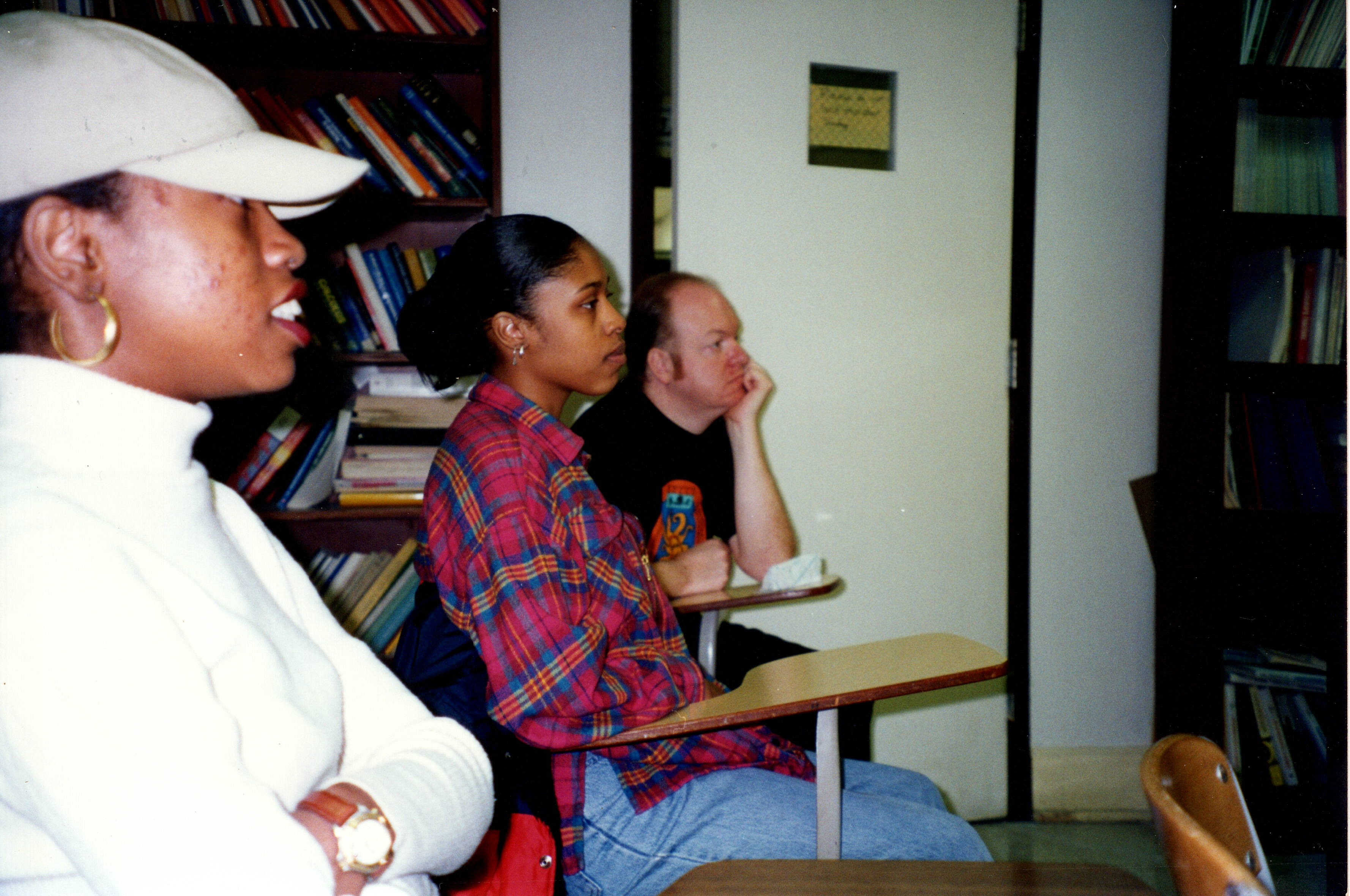
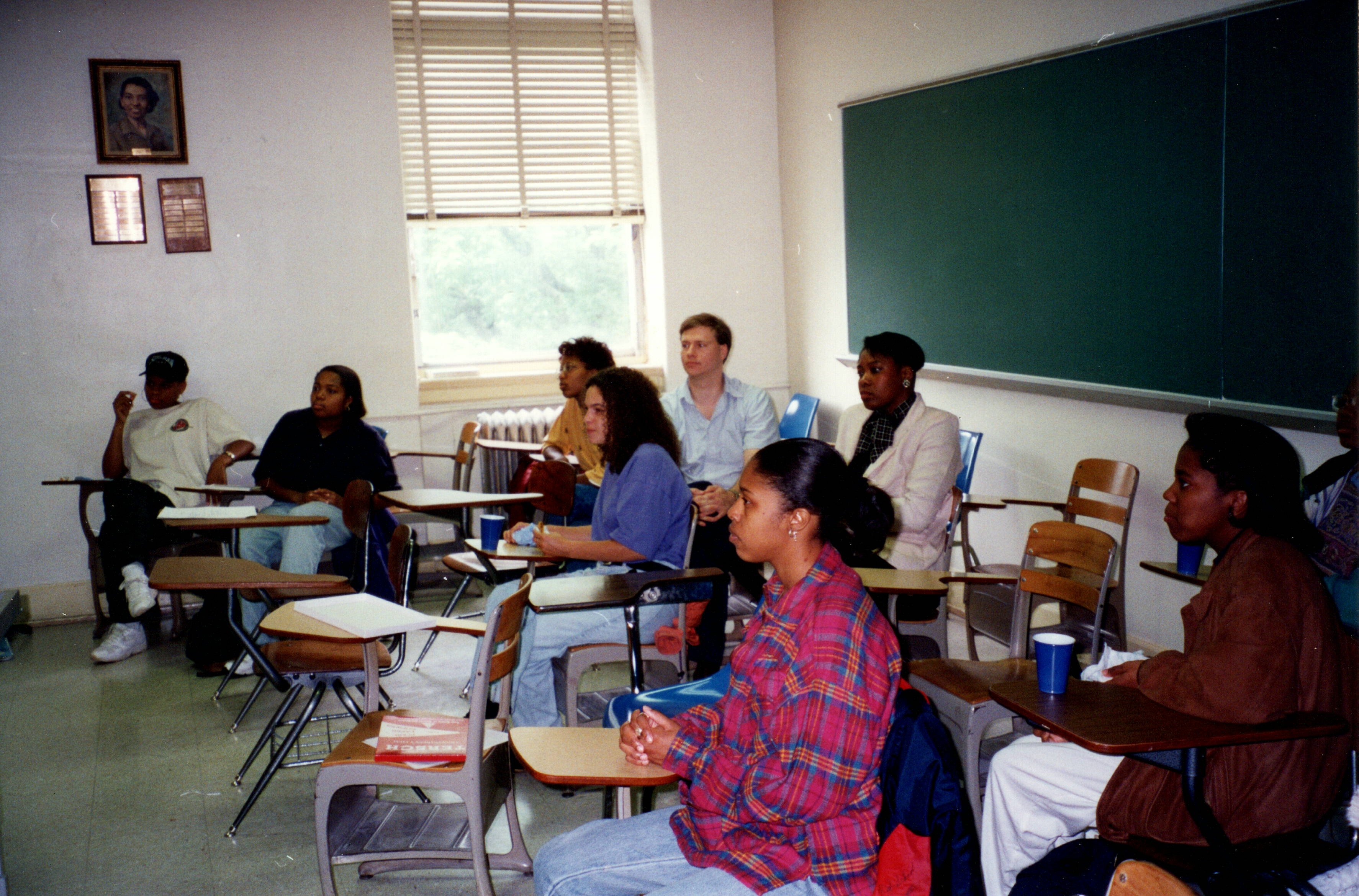
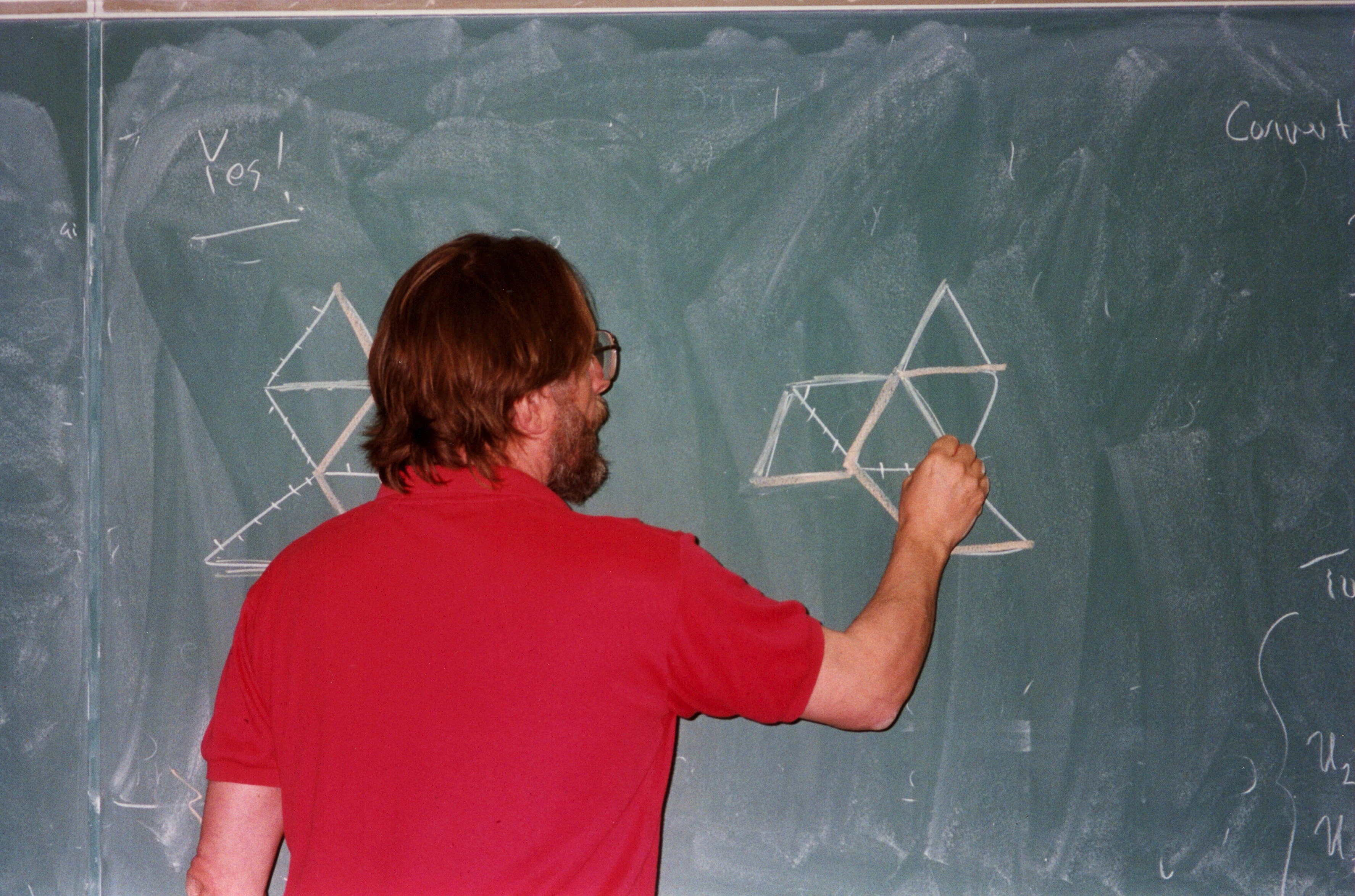
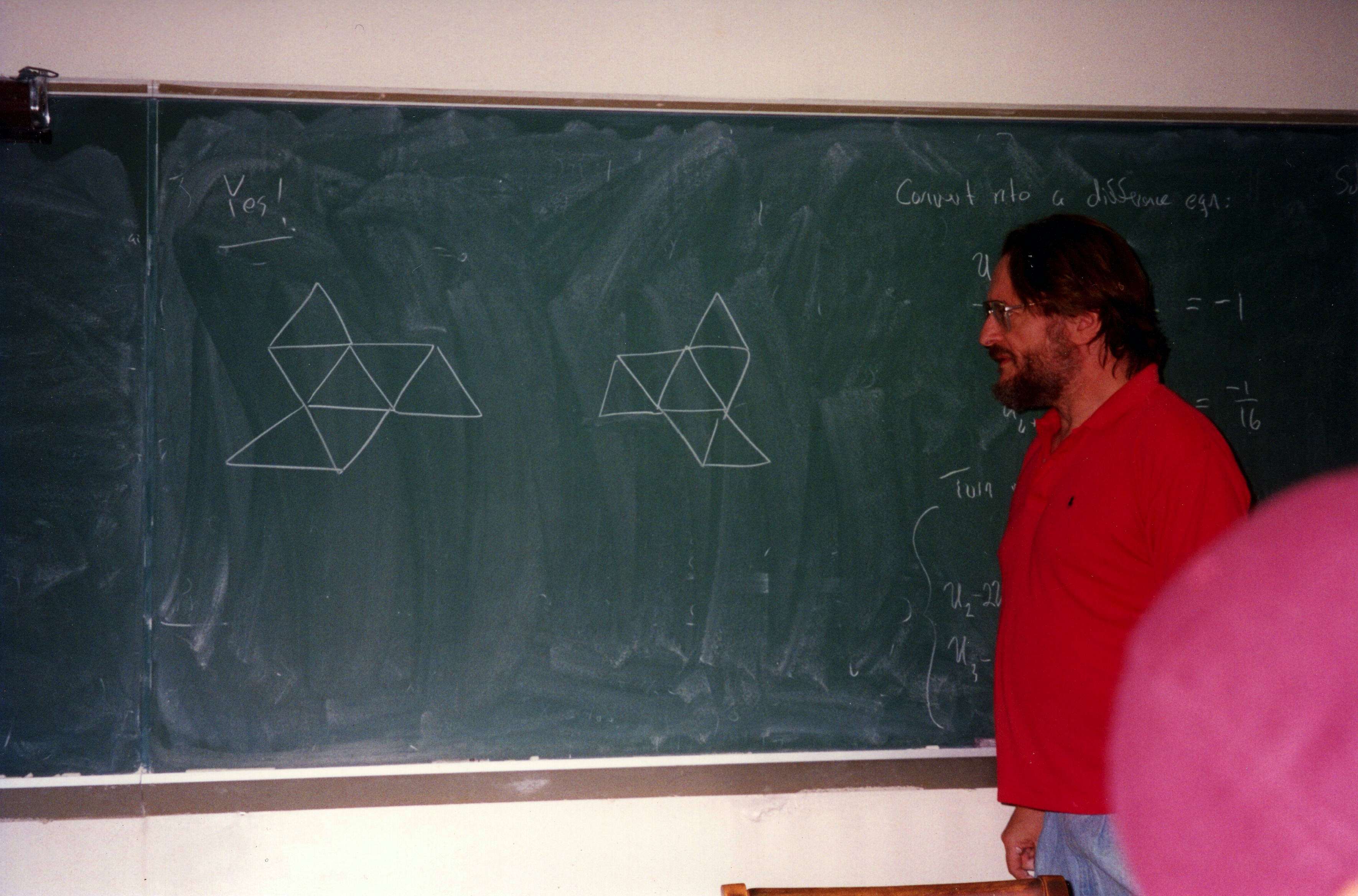
The 75 minute class lasted well over 3 hours. Once again, he flitted effortlessly from topic to topic and charmed everyone over and over. Nobody wanted to leave.
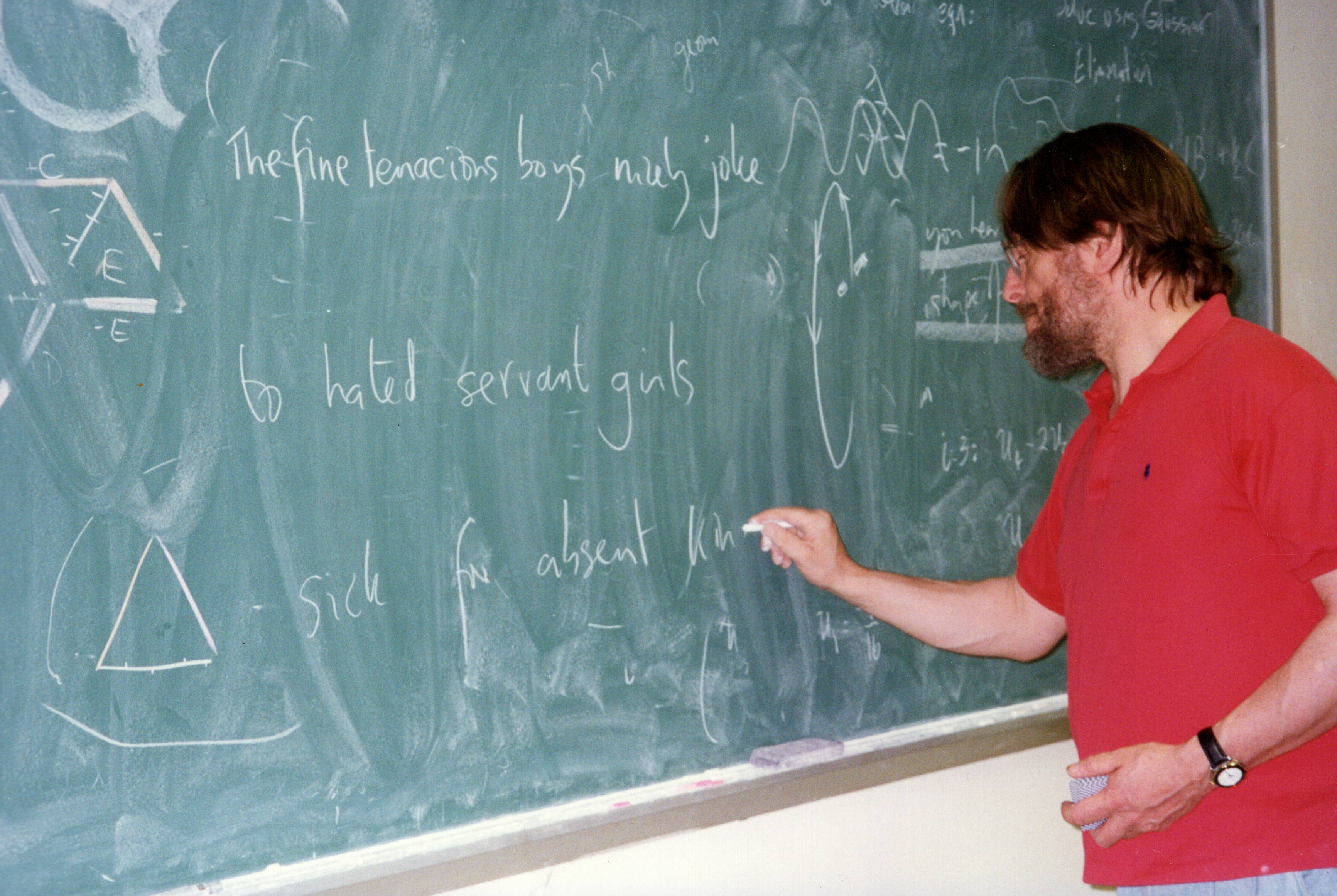
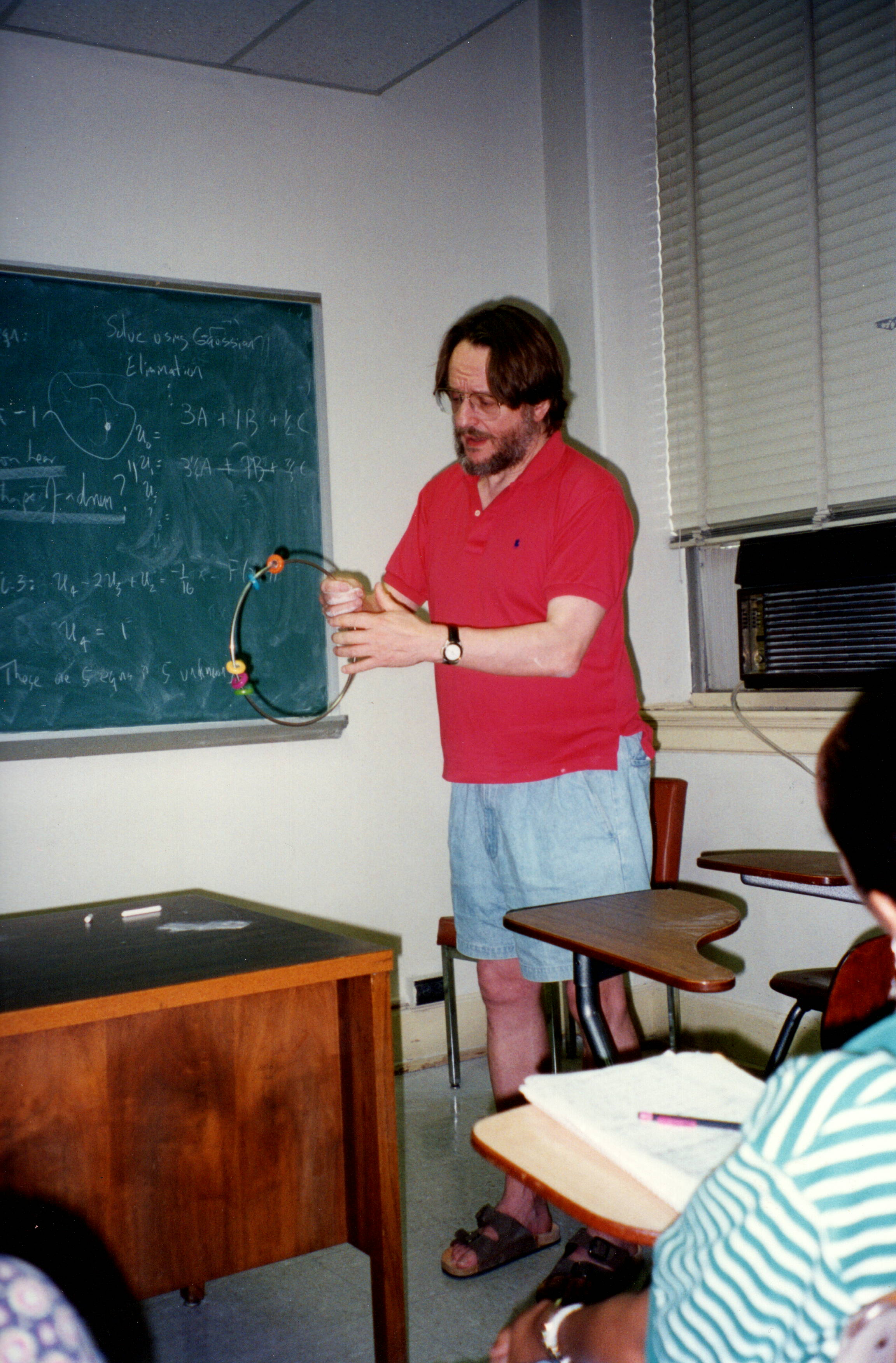
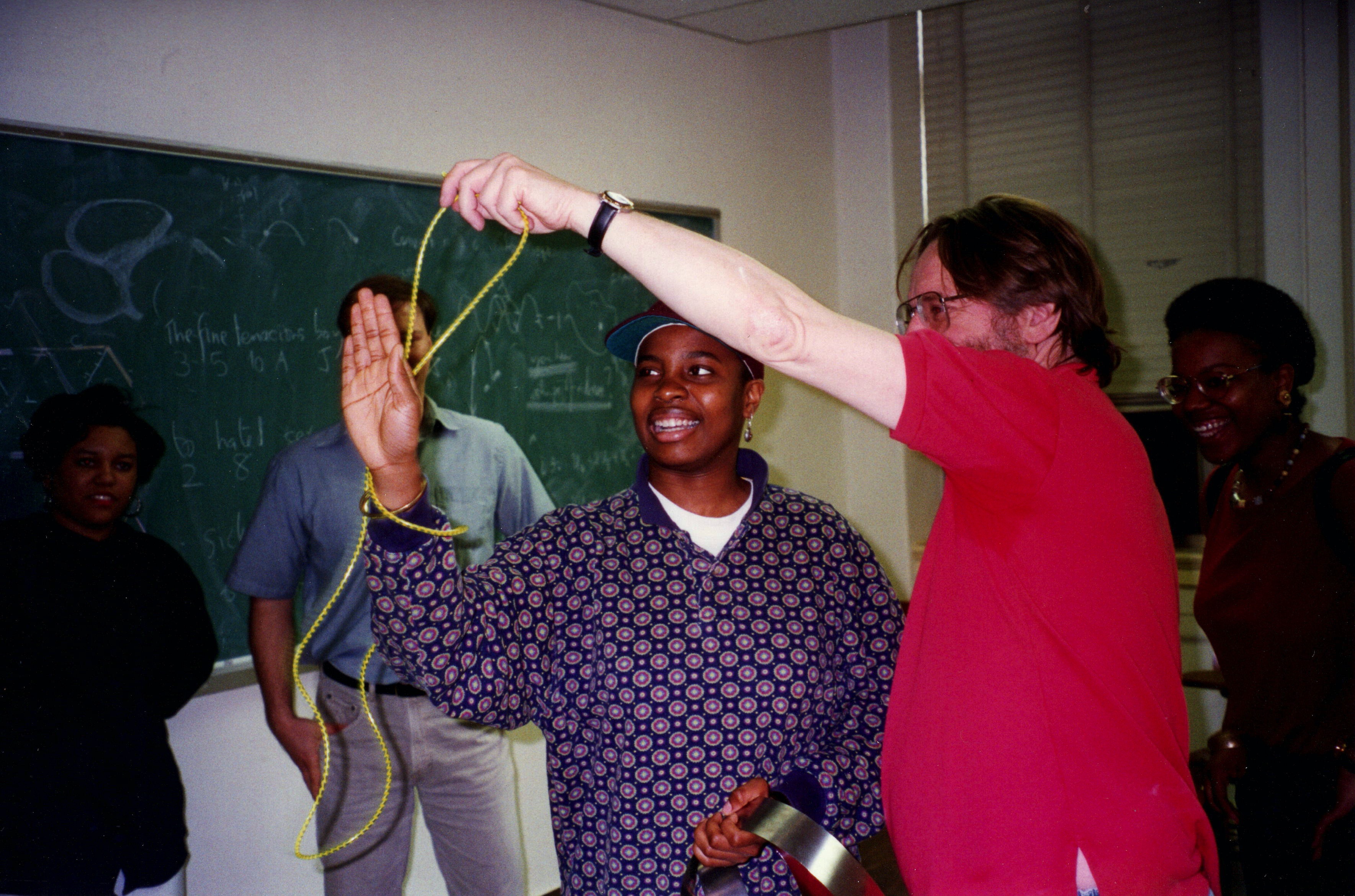
As the pictures confirm, he followed up his stated topic with a math card trick which he based on a pre-arranged deck of cards ordered according to the mnemonic "The Five TenAcious Boys...", then it was back to rings of beads, more ropes, and so on. We didn't stop until 1pm. (Shalewa Thrash (??) C'95 is on the extreme left in the last photo, and Gail Jefferson C'96 is on the extreme right.)
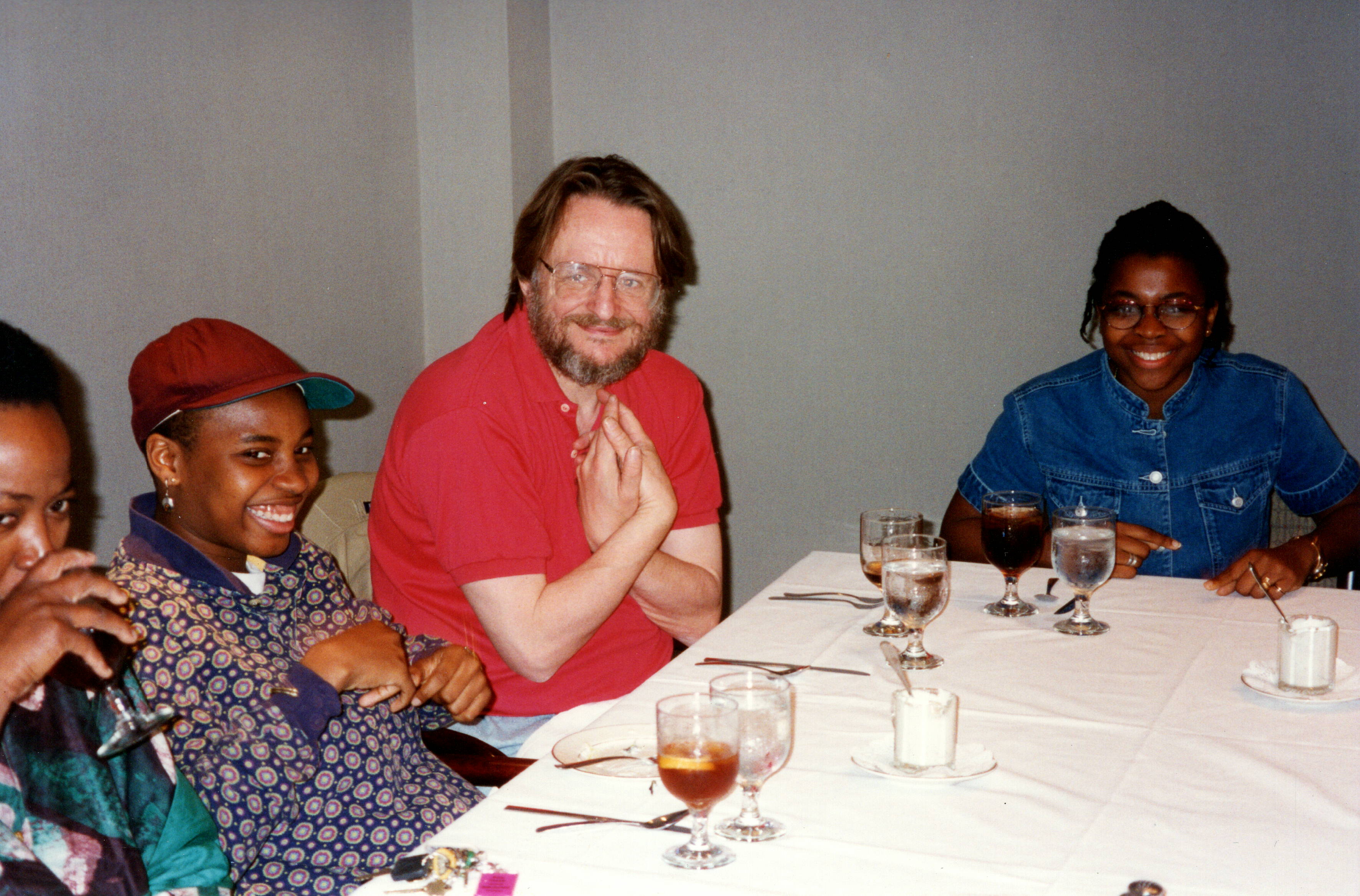
The fun continued at lunch, with Dr Wanda Patterson, and students Tasha Brewley C'95 and Fatimata Liamidi C'95.
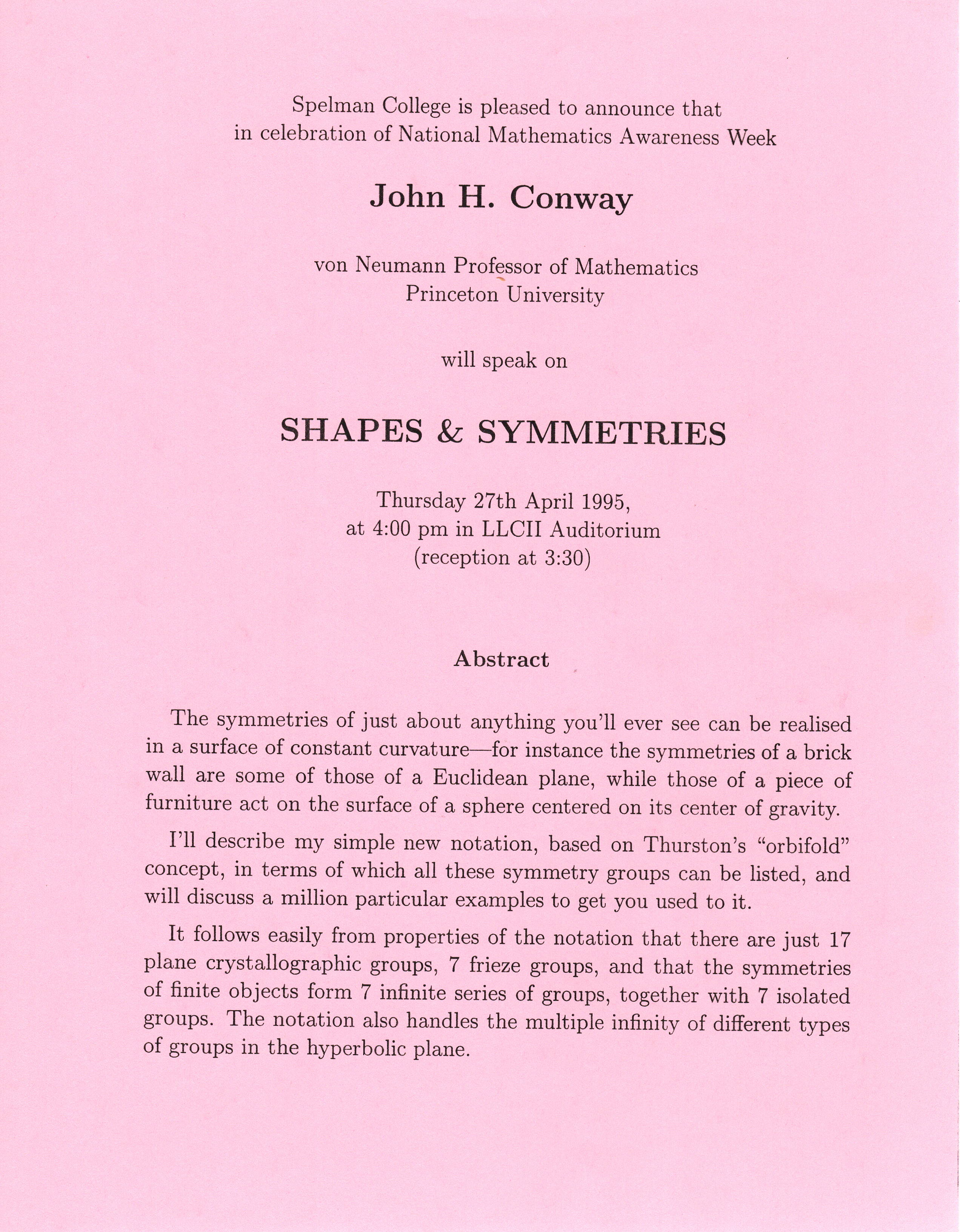
The big public talk was later that day in LLCII, and there was a notable off-campus presence in addition to the math dept and students and some curious colleagues from Art, Biology and Physics.
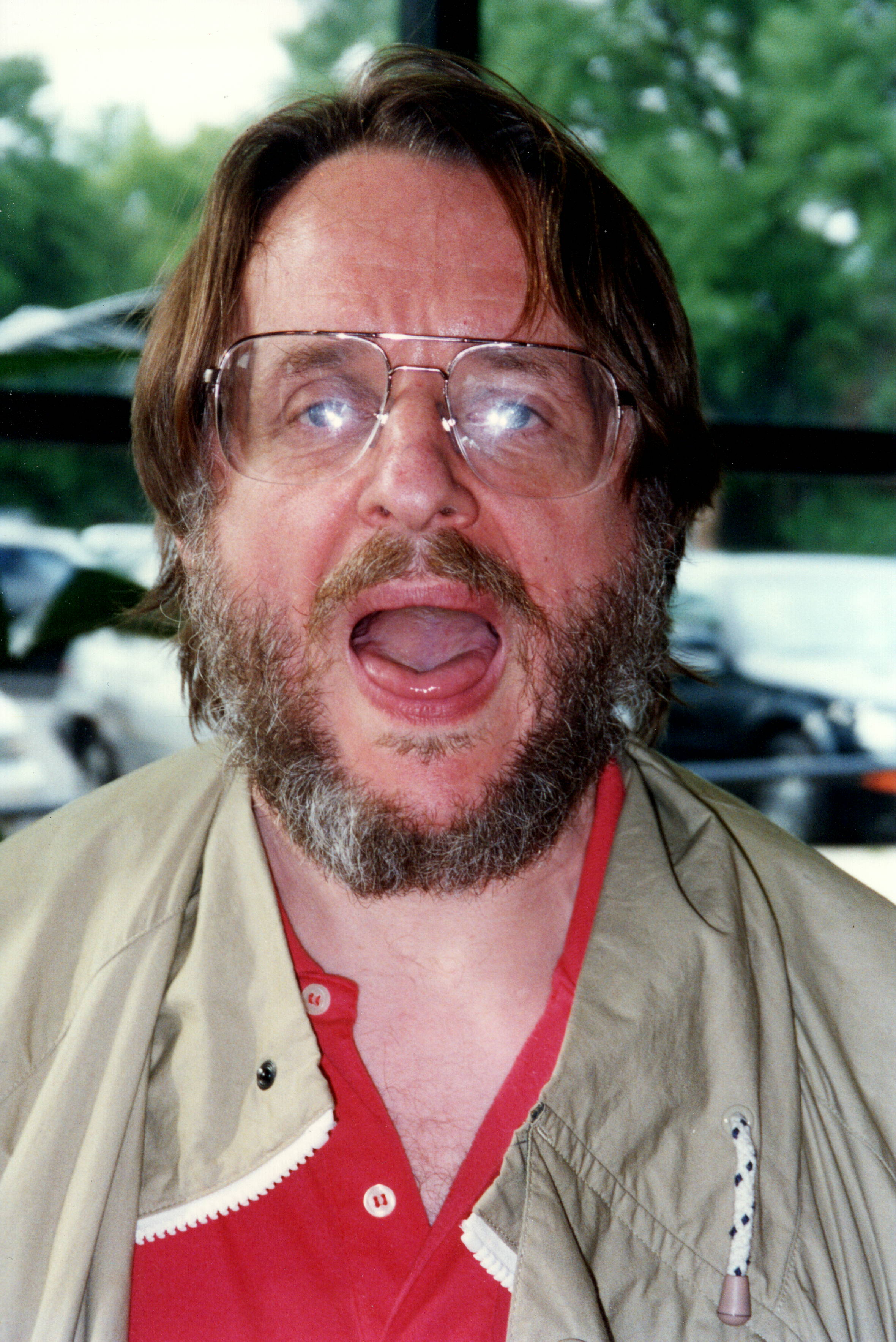
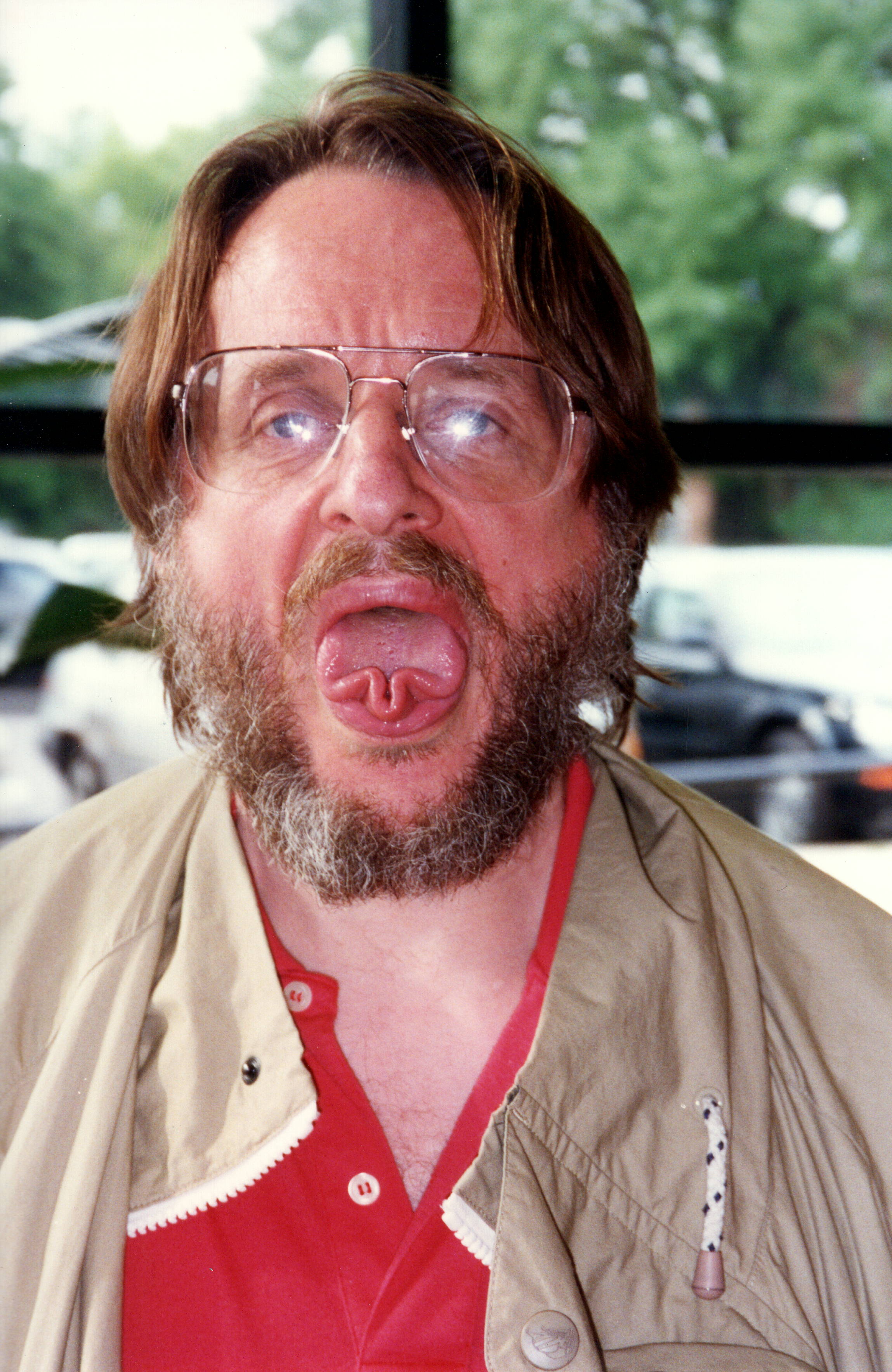
One the way to the large auditorium, John showed off some real tongue-twisters which nobody was able to emulate.
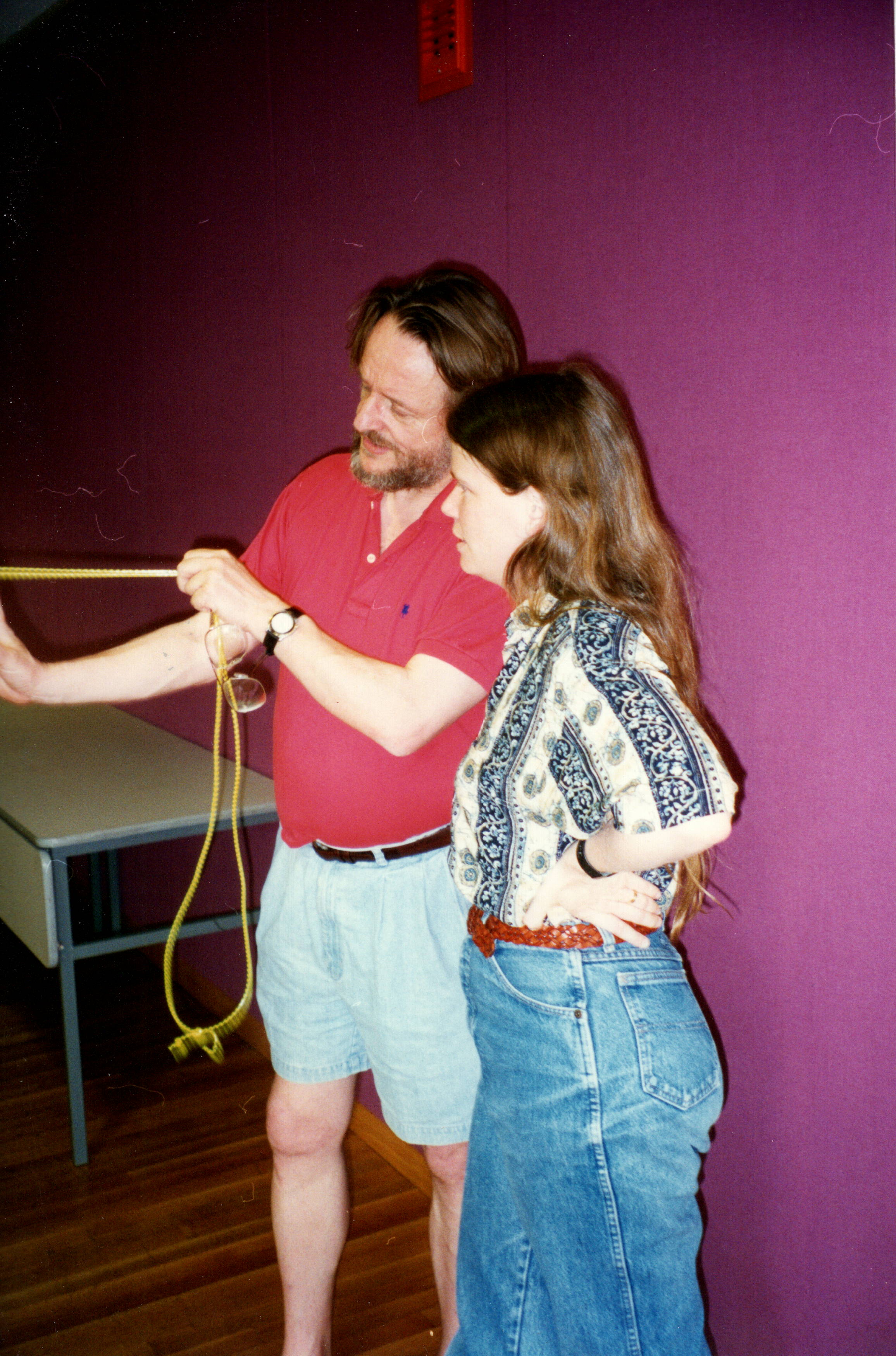
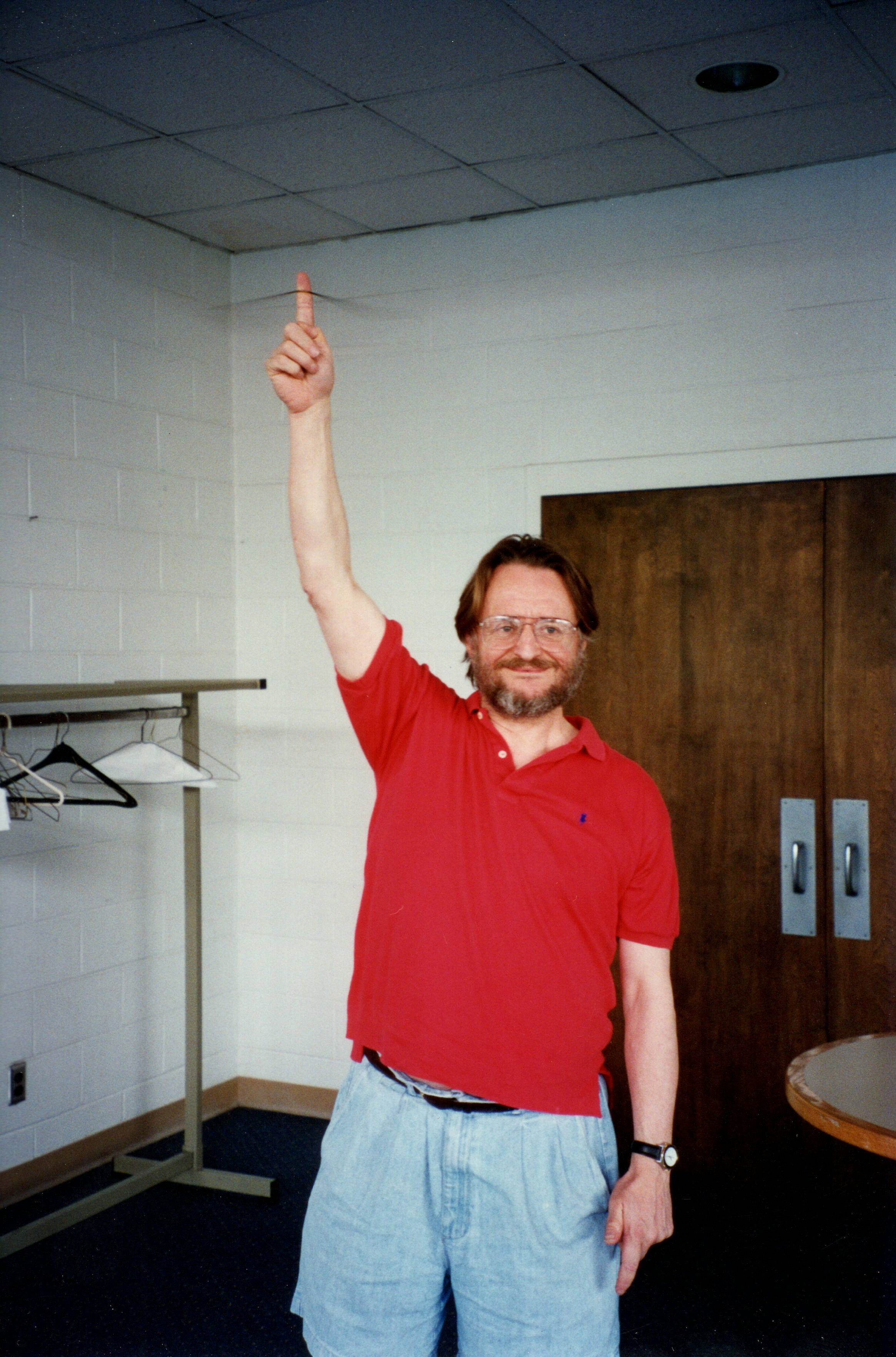
He showed a rope trick to Emory's Vicki Powers, and demo'ed another physics-based trick.
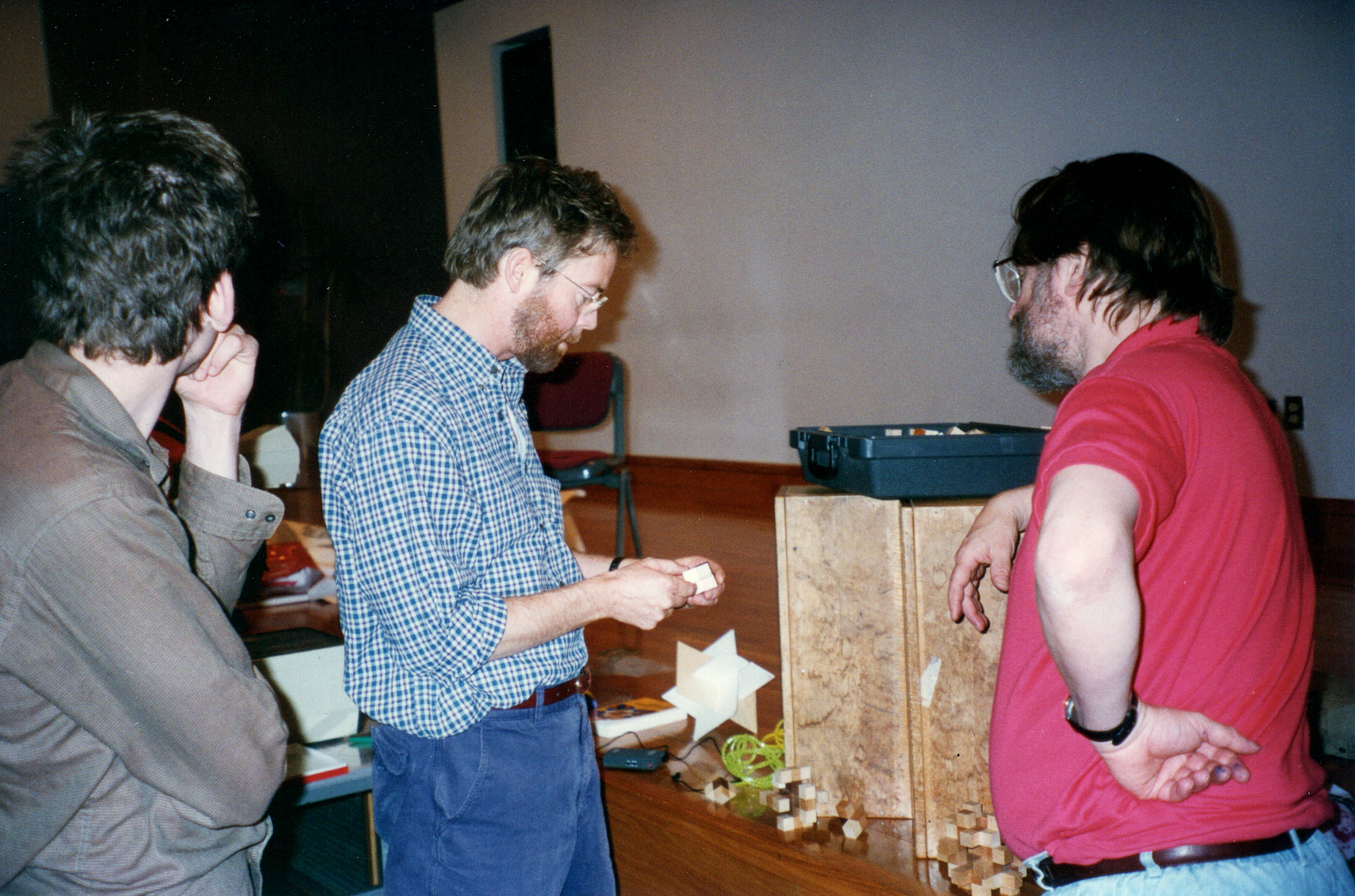
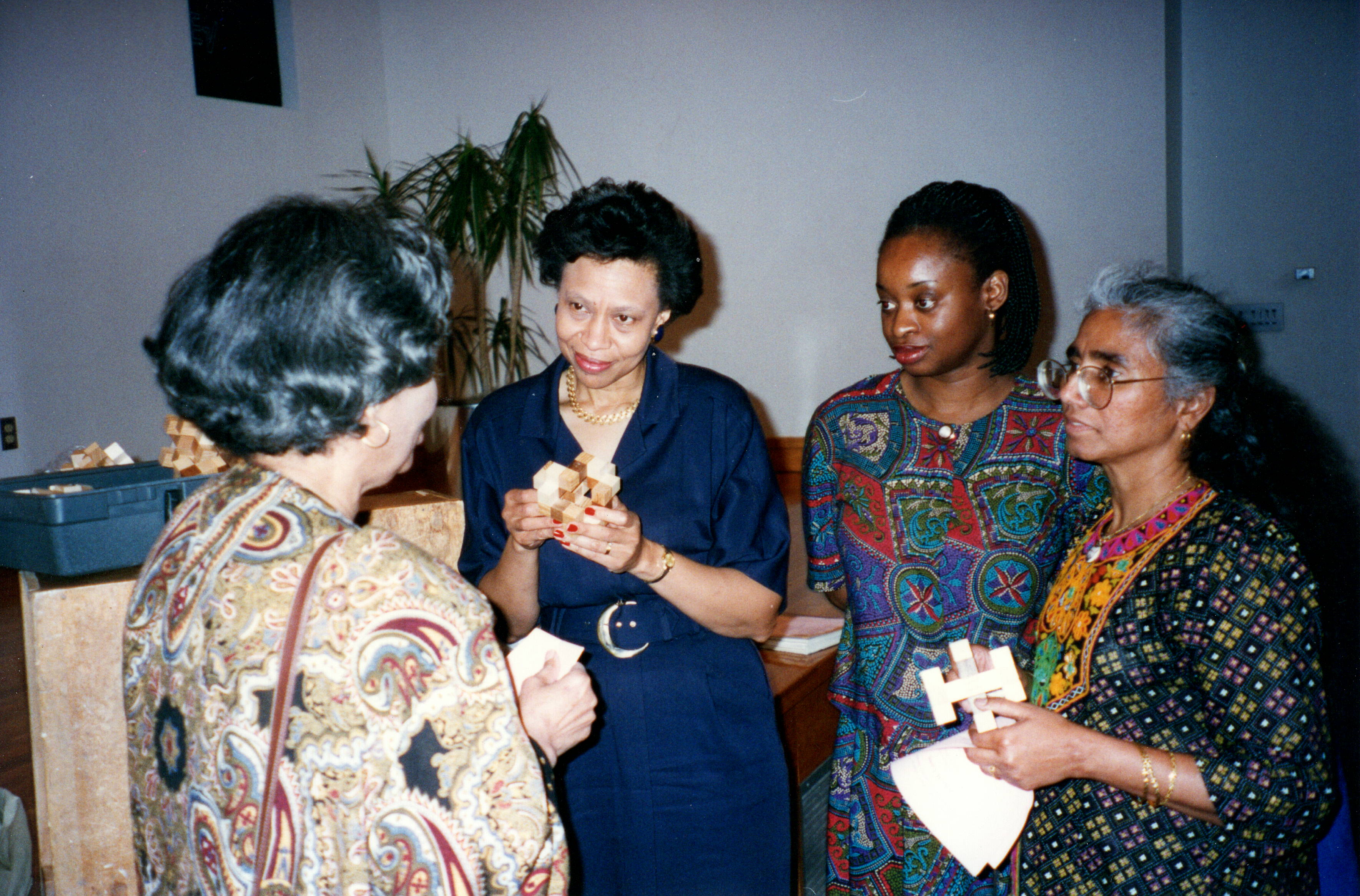
He had a whole bag of tricks with him, shown here being admired by Georgia Tech visitors, and Drs. Falconer, Bozeman, Olubummo and Shah.
The public lecture itself saw John introduce Thurston's orbifold notation for symmetries in a very intuitive and tactile way. He crawled over and under an elevated table to bring home some of points; none present had ever experienced a math lecture quite like it. It was videotaped, and there is a chance that the tape might resurface one day. We do have his handwritten transparencies from the occasion.
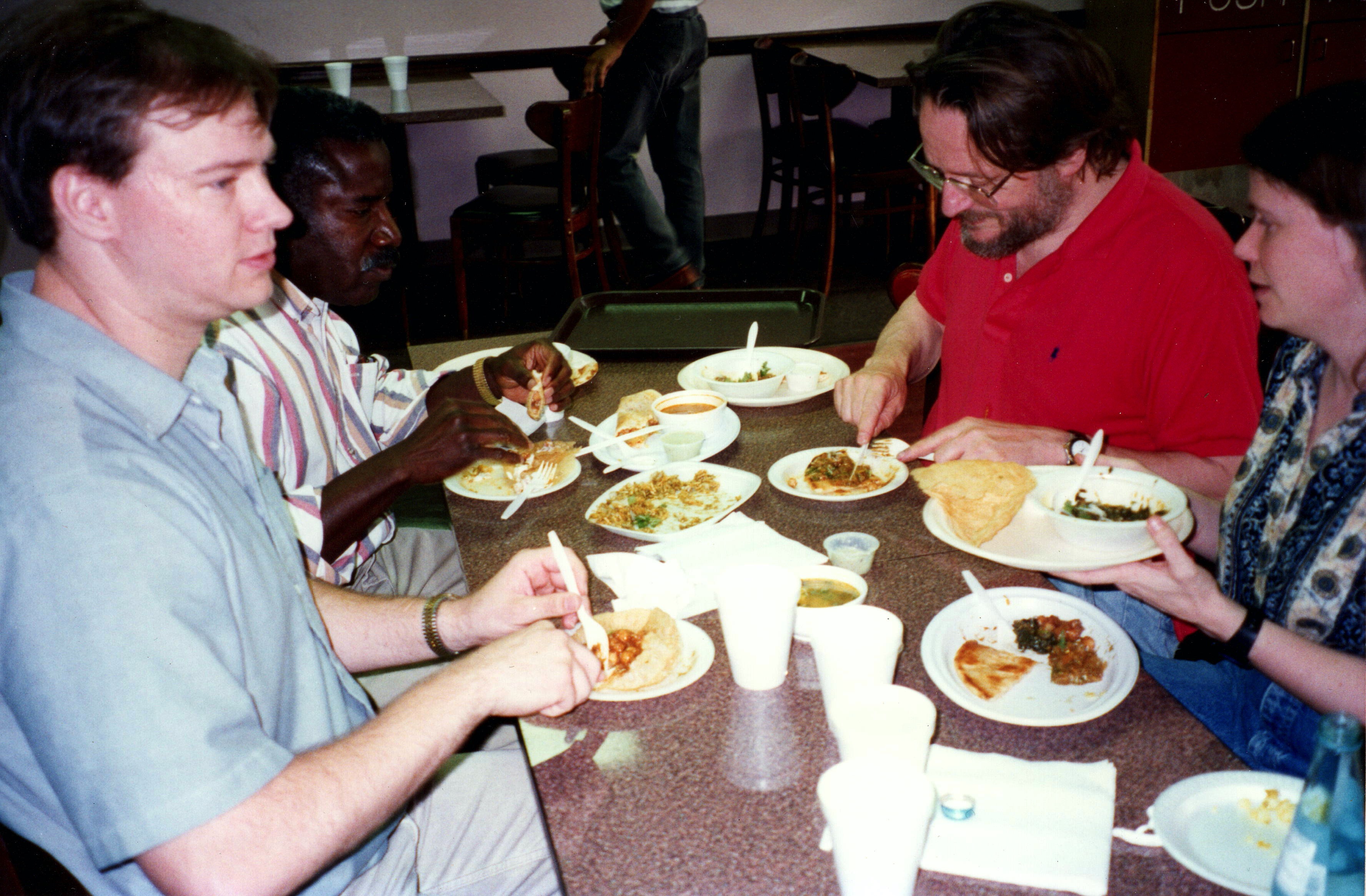
A last quick meal was enjoyed at Indian Delights north of Decatur, before John was whisked back to the airport.
In his absence from his Princeton office, the department secretary there had gone through his desk searching for the lost plane ticket. It was never found, but she did find $5000 worth of uncashed checks.
Dr Bozeman recalls, "Conway was almost an advertisement as to how unconventional a mathematician can be when he spoke at Spelman College in short pants and sandals. He was very informal and engaging; he pulled everyone from students and faculty to the provost into his interactive games. Perhaps it was a message to our students that mathematicians are not 'restricted' or 'limited' to any particular race, style or behavior pattern. It was a joy to host him."